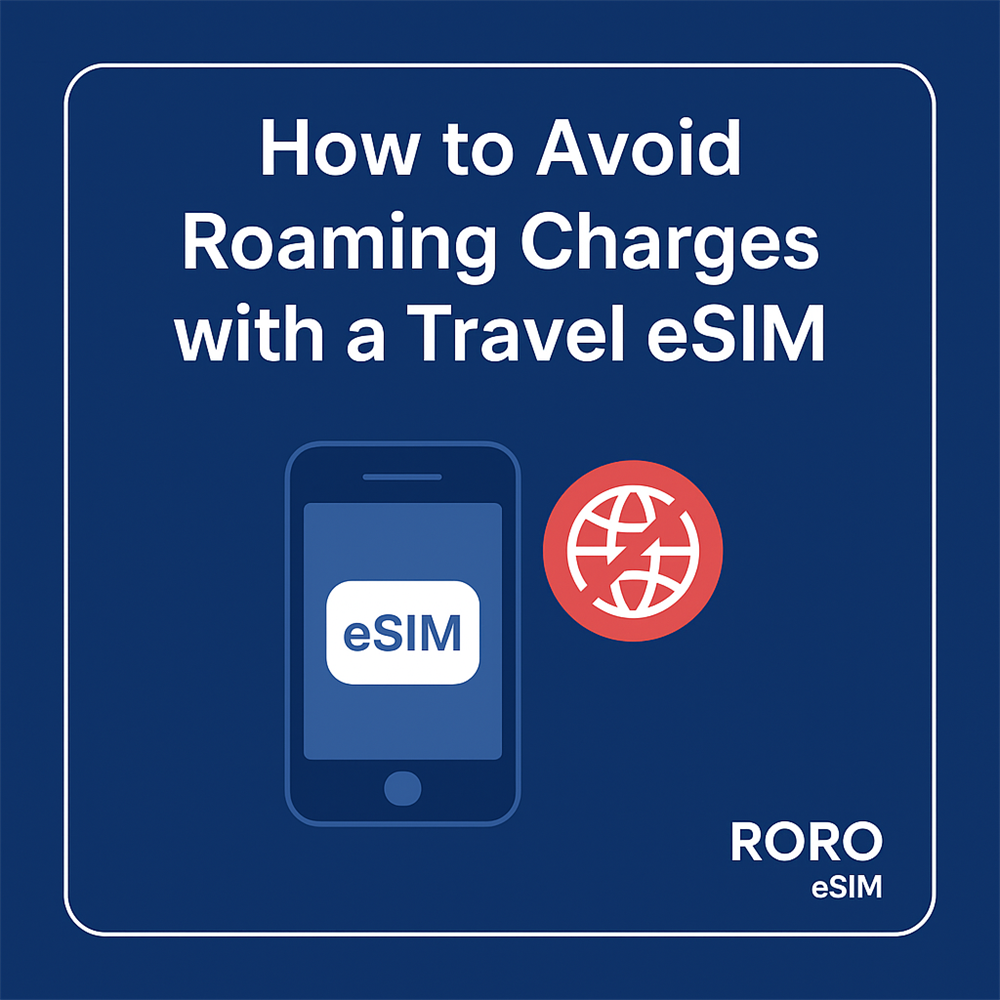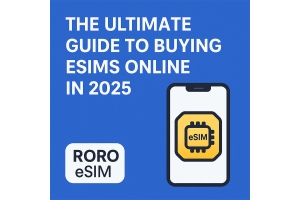
Roaming charges can quickly become a nasty surprise when traveling internationally. But with a modern eSIM, you can avoid these costs while staying reliably connected. Using RORO eSIM as an example, here’s how you can sidestep expensive roaming bills and ensure data stays affordable while abroad.
When you rely on your home mobile plan and roam abroad, every byte of data may count against expensive daily or per-megabyte roaming rates. Instead, choose a travel-dedicated eSIM like RORO:
RORO eSIM gives you access to local networks in over 200 countries by partnering with 300+ local operators.
Because RORO is designed specifically for data travel, you pay local or regional data-plan rates instead of your home carrier’s roaming tariffs.
By switching your data usage to RORO’s profile, you avoid your main SIM’s roaming costs entirely — as long as you set your phone to use the eSIM for data.
One of the best ways to avoid accidental roaming is to install your eSIM ahead of time and only activate it once you arrive at your destination. RORO’s setup instructions recommend exactly this: you purchase the plan, install it, and then enable it only after landing.
This approach ensures:
The validity period of your data plan doesn’t start while you’re still in your home country.
You don’t risk connecting to unintended networks before you reach your destination.
There’s no “welcome roam” charge from your primary SIM during transit.
To make sure you’re truly using only the eSIM data while abroad:
Disable data roaming on your primary SIM line.
Enable data roaming on the travel eSIM (RORO) line.
On dual-SIM phones, set your RORO eSIM as the “Data” or “Mobile Data” line.
By doing this, your phone will prioritize the data route through RORO’s network, not your home provider — preventing unintended roaming from eating up your home data or incurring roaming fees.
Choosing a plan that fits your usage is a key part of avoiding overage costs or wasted data:
RORO offers fixed data plans (e.g., 1 GB, 5 GB, etc.) — if you know how much you’ll need, this can be cheaper than unlimited.
RORO also supports unlimited data plans — but even “unlimited” comes with a fair-use policy, so check the plan details on their site before purchasing.
Consider how long you're traveling, how much data you’ll use each day, and whether you need hotspot-sharing. This will help you avoid buying too little or too much.
Once you’re using your travel eSIM, keep an eye on how much data you consume:
Use the RORO app or your online dashboard to check usage and top up if needed. RORO offers flexible top-ups so you don’t have to guess how much data you’ll use in advance.
On your phone, use built-in data-usage tools to monitor daily or weekly consumption.
If you're sharing data via hotspot, make sure your plan supports it — some “unlimited” plans limit how much can be shared.
Even with a high-data or “unlimited” eSIM plan, combining mobile data with Wi-Fi reduces your risk:
Connect to trusted Wi-Fi networks (cafes, hotels, co-working spaces) when available.
Use offline maps, download content before you travel, and reduce high-bandwidth activities like cloud backups or HD streaming when on mobile data.
This helps preserve your eSIM data for times when Wi-Fi isn’t available, and gives you more flexibility.
Avoiding roaming charges doesn’t have to be complicated. By using a travel-specific eSIM like RORO eSIM, installing it before your trip, properly configuring your phone, and picking the right data plan, you can enjoy affordable, local-rate data in over 200 countries — all without breaking the bank. Careful monitoring and smart usage will help you maximize that data and minimize any unexpected costs.





